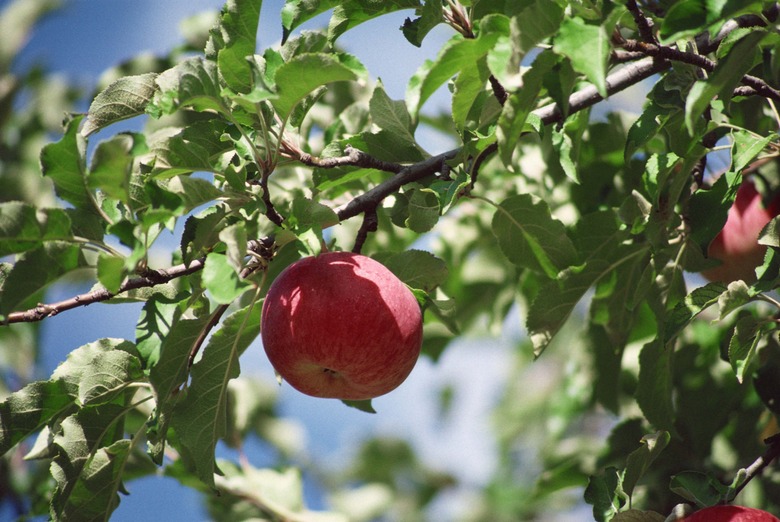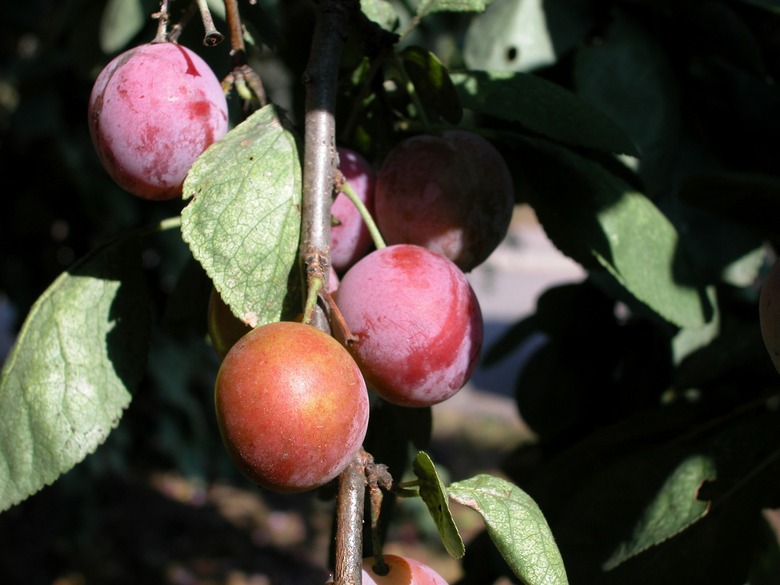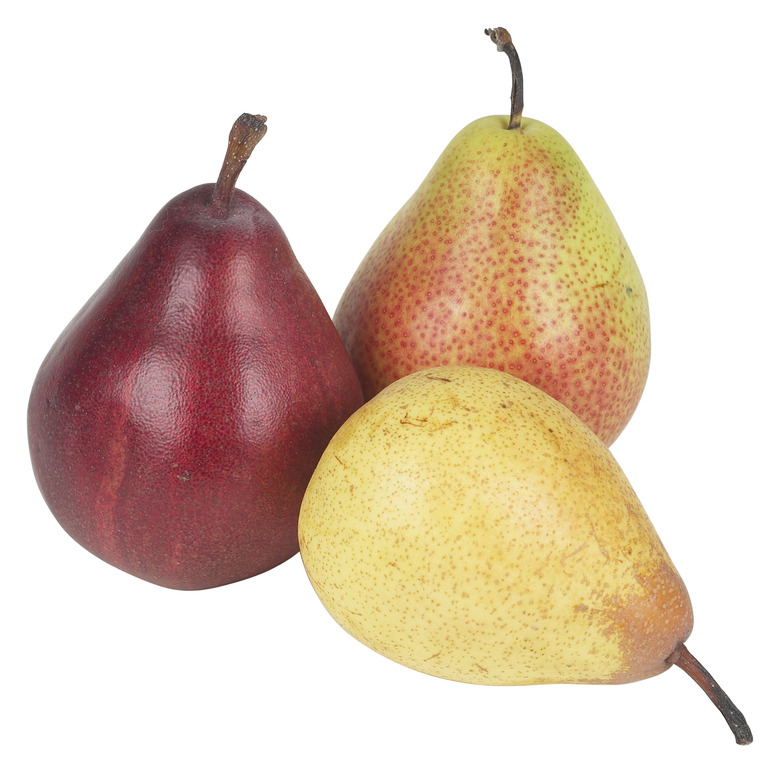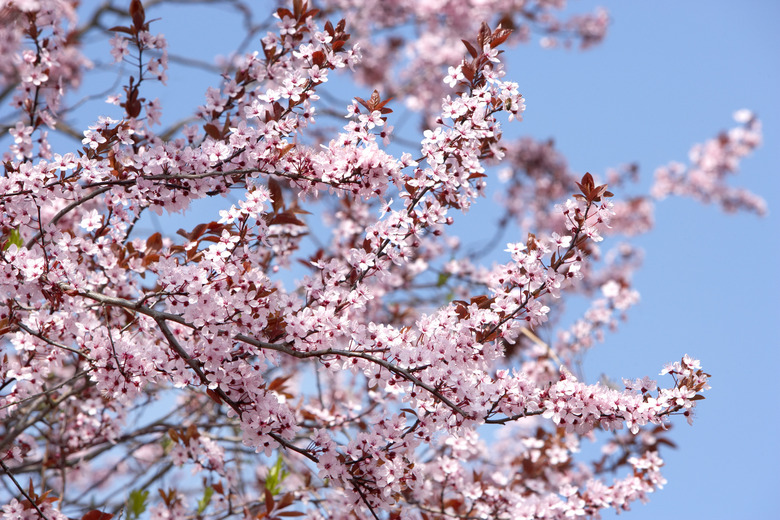Fruit Trees For Zone 5
The U.S. Department of Agriculture divided the country into zones. The standard Plant Hardiness Zone map, first published in 1990, bases each zone on the average annual minimum temperatures recorded throughout North America. Zone 5 covers -20 degrees Fahrenheit to -10 degrees Fahrenheit. Cities like Des Moines, Iowa and Columbia Missouri fall into Zone 5. Note that the United States National Arboretum divides Zone 5 into A and B, with A covering -20 to -15 Fahrenheit and B spanning -15 to -10 Fahrenheit.
Step 1
Apple trees, and most hardy tree types, depend on a certain amount of cold winter weather to end their dormant period and to bud new spring growth when warmer months arrive. Apple varieties like Bethel and Black Oxfords succeed well in -15 degree Fahrenheit weather. In autumn, Bethel trees blossom with crisp, firm, yellow apples. Black Oxfords produce very hard, dark red, round apples great for biting into, cooking and making cider. Because they are hard when picked, some growers suggest keeping them in storage for a few months before using.
Plum
Step 1
Also considered a stone fruit type, plum trees thrive in Zone 5 temperatures. The Stanley, one of the most popular blue plums, produces fruit annually with plums maturing in early September. Other plum varieties that grow in zone 5 are the Superior, the Toka and the Waneta. Plum trees start out small and grow to 10 to 20 feet high bearing pink and purple flowers in Zone 5 in spring.
Step 2
- Apple trees, and most hardy tree types, depend on a certain amount of cold winter weather to end their dormant period and to bud new spring growth when warmer months arrive.
- The Stanley, one of the most popular blue plums, produces fruit annually with plums maturing in early September.
Pear Tree
Step 1
Pear trees are surprisingly hardy, or able to withstand cold temperatures, given their soft, sugary fruit. Zone 5 varieties include the Bosc, Chanticleer, Orient and Bartletts. The Bartlett, which grows the most in California, can thrive as well in an Iowa winter as it can in sunny Southern or Central California.
Cherry Tree
Step 1
For some fruit trees, the winter months are essential. Consider one of the stone fruits, cherries—along with plums—can lose cold hardiness due to extended midwinter warm periods, like losing their immune system strength. Planting a cherry tree in Zone 5 is safe and will yield delicious red cherries come early autumn. However, sweet cherry trees like Bing, Chinook and Emperor Francis are more sensitive to cold and will not grow in frigid weather. Before picking from a hardy cherry tree, wait until the small dark fruits turn fully red–the sugar content increases the last few days of ripening.
Step 2
- Pear trees are surprisingly hardy, or able to withstand cold temperatures, given their soft, sugary fruit.
- Consider one of the stone fruits, cherries—along with plums—can lose cold hardiness due to extended midwinter warm periods, like losing their immune system strength.



